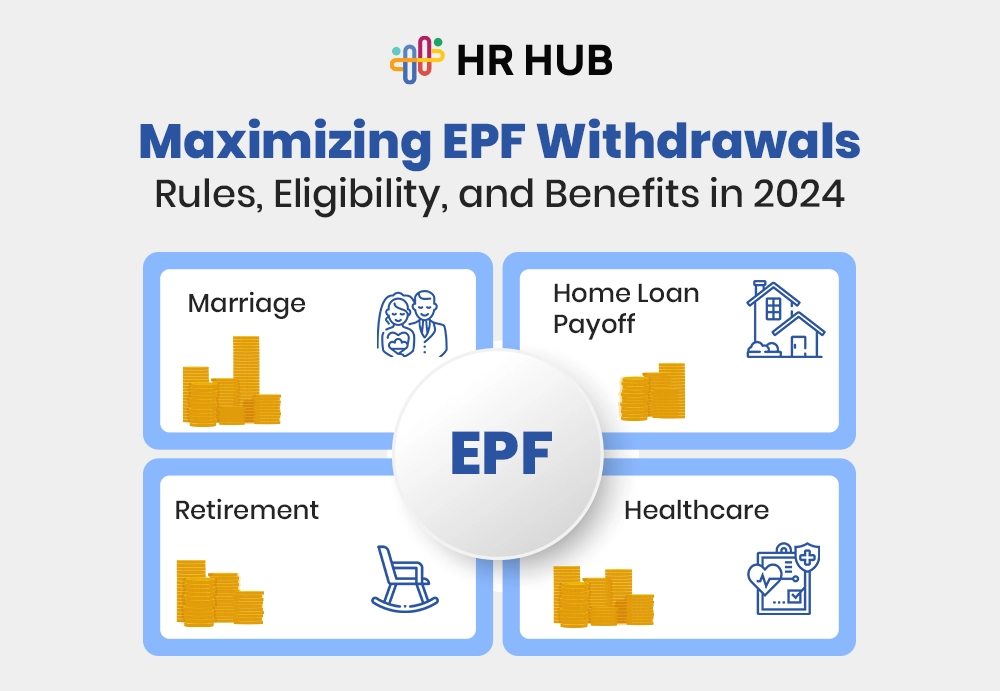Ever dreamt of watching your money grow quietly in the background while you go about your life?
That’s exactly what the Public Provident Fund (PPF) does—slow, steady, but oh-so-powerful.
Whether you’re a newbie investor or someone finally trying to decode “that thing dad always talked about,” this guide will walk you through everything you need to know—without boring you to sleep.
PPF Explained – The Gentle Giant of Indian Investments
Let’s start with the basics—but not the boring kind.
Imagine a savings tool that is so safe, backed by the government, and smart that it lets you save on taxes and earn decent returns. Sounds too good to be true? Welcome to the world of PPF (Public Provident Fund).
Launched in 1968 by the National Savings Institute, the PPF was designed to encourage small savings for individuals with an attractive combination of safety, returns, and tax benefits. Over the years, it’s become one of India's most trusted long-term investment tools.
What Exactly is PPF?
PPF is a government-backed savings scheme that is available at post offices and banks across India. Think of it as your retirement piggy bank—only this one earns interest, gets tax benefits, and stays locked in to keep you financially disciplined.
Key Features of PPF
- Tenure: 15 years (can be extended in blocks of 5 years, indefinitely)
- Investment Range: Minimum ₹500; Maximum ₹1.5 lakh per financial year
- Deposit Frequency: Once per year or in a maximum of 12 monthly instalments
- Interest Rate: Declared by the Government of India every quarter
- Compounding: Annual compounding of interest
- Risk Profile: Virtually zero-risk since it's sovereign guaranteed

Why is PPF Popular?
In a country like India, where market risks still scare many first-time investors, PPF is a secure alternative to equity or mutual funds. It's ideal for:
- Salaried individuals looking for tax-saving options
- Risk-averse investors
- Long-term financial planning (children’s education, retirement corpus)
Additional Benefits:
- Loan facility: Available between the 3rd and 6th financial year
- Partial withdrawal: Allowed from the 7th year onward
- Nomination: You can nominate someone at the time of account opening or later
Who Can Open a PPF Account?
- Any Indian resident (minor or adult)
- Not allowed for NRIs or HUFs (Hindu Undivided Families)
Why do people love it? Because it doesn’t just sit there. It grows. Quietly. Steadily. With zero drama.
The Magic of PPF Interest Rates
PPF interest rates might not make headlines like stock markets, but their impact on your returns? Huge.
How Are PPF Interest Rates Decided?
Every quarter, the Ministry of Finance reviews the PPF interest rate. It is loosely linked to government securities (G-secs) yield and other macroeconomic factors. While it is not market-driven like mutual funds, it does respond to economic trends.
Compounding: The Real Hero
Interest is compounded annually but calculated monthly based on the lowest balance between the 5th and last day of each month . So, the earlier you deposit in a month, the better.
Let’s say you deposit ₹10,000 on April 2. You earn interest for that month. If you wait until April 10? Sorry—no interest for April. Timing is everything.
A Simple Way to Visualize It:
- Interest for the year = Monthly Interest × 12
- Monthly Interest = (Lowest monthly balance × Annual Rate) / 12
Over time, this compounding magic can turn small monthly investments into a sizable maturity corpus.
Real Example:
If you deposit ₹50,000 on April 4, no interest is earned for April. If you deposit it on April 1 or 2, you earn interest for the whole month. See the difference timing can make?
Interest Formula:
Interest = Balance x Interest Rate / 100

Step-by-Step – How to Calculate Your PPF Returns
To perform easy calculations on PPF returns, you can use an online PPF calculator from HR HUB to get precise results based on different monthly deposit patterns. Just add your essential details; our easy-to-use PPF calculator will make your calculations and work much easier.
Now, let’s see how the calculation works.
Step 1: Consistency is King
You can deposit once a year or in 12 monthly instalments. You're good as long as it doesn’t exceed ₹1.5 lakh annually. But consistent contributions = better long-term returns.
Step 2: Understand Compounding
Every year, the interest gets added to your account, and the next year's interest is calculated on that total. This snowball effect over 15 years can create significant wealth.
Step 3: Use the Formula
FV = P × [(1 + r)^n - 1] / r
Where:
P = annual investment
r = annual interest rate
n = number of years
Example:
- Invest ₹1.5 lakh yearly at 7.1% for 15 years:
- Total Investment: ₹22,50,000
- Maturity Value: ₹40+ lakhs (approx.)
Even small investments compound to big amounts over time. That’s the magic of patience and planning.
The Power of Timing – How Contributions Shape Returns
Most people overlook this: when you contribute, it is just as important as how much you contribute.
Timing is Everything:
- Deposit before the 5th of the month to earn interest for that month.
- Deposit for full benefit at the start of the financial year (April).
Monthly vs Lump Sum:
|
Type
|
Advantage
|
|
Monthly Deposit
|
Budget-friendly, disciplined investing
|
|
Lump Sum in April
|
Maximizes interest earned for the year
|
Pro Tip: Even investing ₹5,000 before the 5th of every month outperforms the amount deposited after the 10th.
PPF vs Other Investments – How Does It Stack Up?
Let’s settle this: Is PPF the best place for your money?
Here’s a Quick Comparison:
|
Feature
|
PPF
|
FD
|
Mutual Funds
|
SIP
|
|
Risk
|
None
|
Low
|
Moderate-High
|
Moderate-High
|
|
Return Range
|
7.1%
|
6-7%
|
10-15%
|
10-15%
|
|
Lock-in Period
|
15 years
|
5 years
|
Varies
|
Flexible
|
|
Tax Benefits
|
EEE
|
Limited
|
Varies
|
Varies
|
PPF Wins On:
- Stability
- Predictable returns
- Complete tax exemption
But if you're chasing higher returns and can tolerate market swings, mutual funds or SIPs might be your thing.
Tax Benefits – The Triple Treat of PPF
PPF isn’t just safe and steady—it’s a tax-saving superstar.
EEE Status = Exempt. Exempt. Exempt.
- Exempt on Investment: Up to ₹1.5 lakh deduction under Section 80C
- Exempt on Interest: No tax on interest earned
- Exempt on Withdrawal: Entire maturity amount is tax-free
Withdrawal & Closure:
- Partial withdrawals after 7 years
- Tax-free even on premature closure (conditions apply)
How to Open a PPF Account – As Easy as Ordering Pizza
Opening a PPF account today is a breeze. You can do it online or by walking into any major bank or post office.
Here’s What You Need:
- PAN Card
- ID Proof (Aadhaar, Voter ID, etc.)
- Address Proof
- Passport-size Photo
Where to Open:
- State Bank of India
- ICICI, HDFC, Axis Bank
- Post Offices
Online portals make it simple, fast, and paperless.
Withdrawal & Premature Closure – Know the Rules
Yes, PPF locks your money in. But it also knows life happens.
Partial Withdrawal:
- Allowed from the 7th year onwards
- Up to 50% of the balance at the end of the 4th year or preceding year
Premature Closure:
Allowed after 5 years in special cases:
- Serious illness
- Higher education
- Death of the account holder
Taxation: Even in premature closure, interest remains tax-free.
Advanced PPF Strategies – The Wealth Builder’s Playbook
Want to make your PPF work smarter, not just harder? Here’s how:
- Start Early
The earlier you start, the more you benefit from compound interest.
- Invest Before the 5th
Always deposit before the 5th of the month to earn interest that month.
- Max Out Contributions
Try to hit that ₹1.5 lakh ceiling each year for maximum returns.
- Lump Sum in April
Investing the entire amount in April earns the full year's interest—a no-brainer!
- Combine with Other Investments
PPF is great but shines brightest as part of a diversified portfolio.
Final Thoughts: Your Money Deserves to Work as Hard as You Do
PPF isn’t flashy. It won’t get your adrenaline pumping. But it offers peace of mind, consistent growth, and a secure financial future.
If you’re looking for a patient, tax-efficient, and powerful investment over time, PPF deserves a place in your financial strategy.
Bonus: Use HR HUB's Free PPF Calculator
At HR HUB , we understand that financial planning can be overwhelming—but it doesn’t have to be. Our easy-to-use PPF Calculator helps you:
- Forecast your maturity amount
- Experiment with monthly vs annual deposits
- See how early investments boost your returns
- No guesswork. Just smart planning.
Try the HR HUB PPF Calculator today and make your savings strategy smarter, safer, and stress-free






